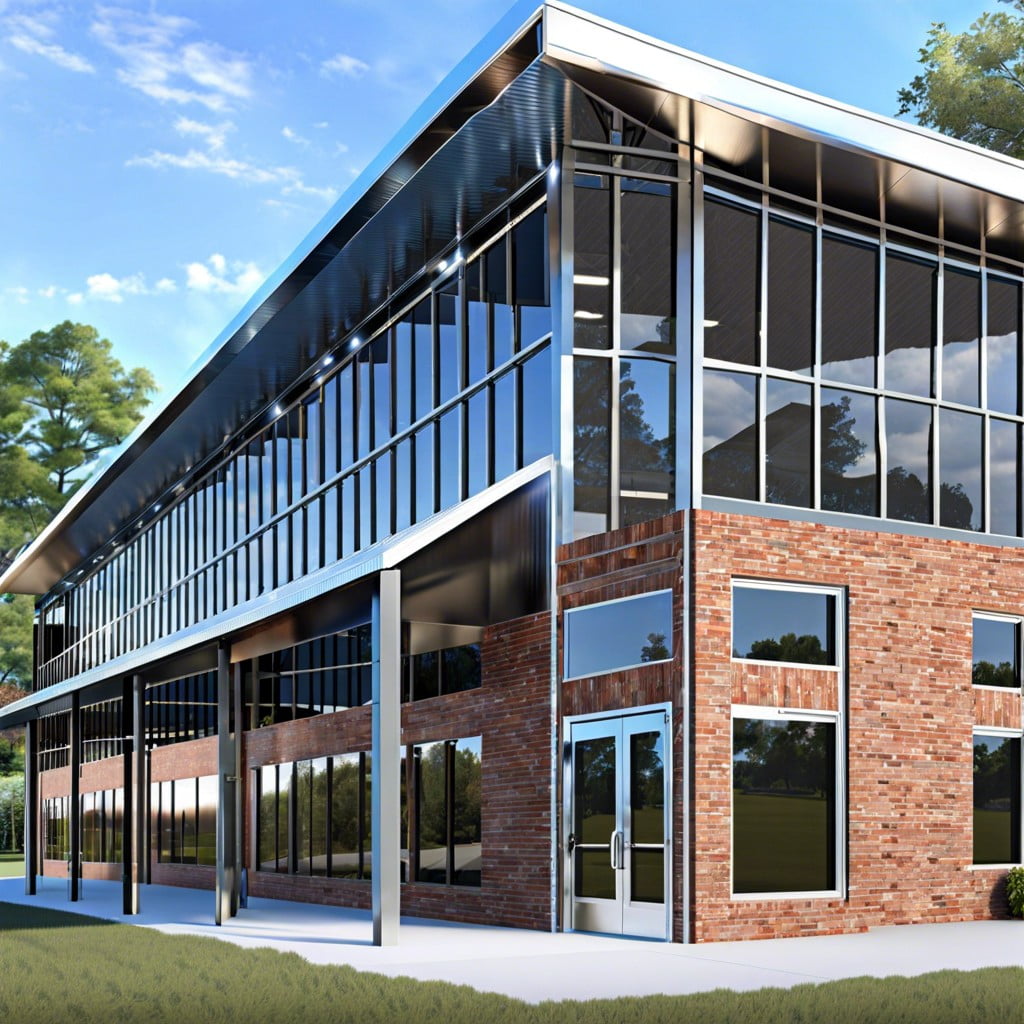Learn about the benefits and options available for constructing metal buildings in North Carolina, suited to both industrial and residential needs.
Key takeaways:
- Metal buildings in North Carolina cater to personal and commercial needs.
- Benefits include durability, cost efficiency, energy efficiency, and flexibility.
- Popular designs include Quonset huts and straight wall buildings.
- Customizable features include insulation, doors and windows, and color schemes.
- Building permits, regulations and installation are crucial, check with local building departments.
The Types of Metal Buildings Available in North Carolina

North Carolina offers a variety of metal buildings tailored to both personal and commercial needs. Agricultural barns and storage facilities are robust favorites among farmers, helping protect machinery and crops from the state’s unpredictable weather. For those looking into Carolina carports, metal structures provide durable protection for vehicles against rain and sunshine.
Commercial enterprises frequently opt for steel warehouses or workshops due to their expandability and resistance against elements, essential in a business environment. Residential buyers might find the charm of metal-framed homes appealing, especially with their energy efficiency and lower maintenance costs. Moreover, air hangars and church buildings also make use of metal construction, showcasing the material’s versatility across different needs. Each category brings specific benefits, catering neatly to the varied demands of the Tar Heel State.
Benefits of Metal Buildings in North Carolina
Metal buildings in North Carolina offer a plethora of advantages that cater to both the economic and environmental sensibilities of the modern builder. Firstly, their durability stands up to the diverse North Carolina weather, from humid summers to chilly winters, without succumbing to issues like rot, termites, or mold that often plague traditional wooden structures.
Cost efficiency is another significant benefit. The construction process for metal buildings typically involves less labor and fewer materials than conventional buildings, which can translate to quicker build times and lower overall costs. This aspect is particularly appealing in a bustling construction market.
Moreover, metal buildings are often praised for their energy efficiency. With properly installed insulation, these structures keep interiors cooler in summer and warmer in winter, easing the burden on HVAC systems and reducing energy bills—a welcome feature in North Carolina’s variable climate.
Additionally, the flexibility in design of metal buildings allows for easy expansions or modifications. As needs change, it’s simpler and less costly to adapt a metal building than a traditional one. This adaptability makes metal constructions a long-term investment for growing businesses or evolving industrial needs.
Lastly, they contribute positively to environmental sustainability. Most of the materials used in metal buildings are recyclable, and the buildings themselves are often made from recycled materials. This facet aligns well with the increasing environmental consciousness among North Carolinians.
Popular Metal Building Configurations and Customizable Features in NC
North Carolina’s diverse geography, from the Appalachian Mountains to the Atlantic coast, influences the popular metal building designs and their features. Here are some commonly appreciated styles and options in the Tar Heel State:
Quonset Huts: With their semi-circular shape, Quonset huts offer simplicity and durability, especially favored in agricultural settings or as storage units.
Straight Wall Buildings: More traditional in appearance, these structures are versatile, serving well as commercial storefronts, warehouses, or even stylish modern homes.
- Customizable Features:
- Insulation Options: Given the varying climate, from humid summers to chilly winters, insulation is a customizable key feature, ensuring energy efficiency.
- Doors and Windows: Choices range from oversized garage doors for equipment access to energy-efficient windows for office spaces.
- Color Schemes: From earthy tones that blend into natural surroundings to bright colors that stand out, the aesthetics can be tailored to personal or branded preferences.
Each option not only meets distinct functional needs but also complies with local aesthetics and building codes, ensuring that every metal building fits perfectly both in purpose and place.
Building Permits, Regulations, and Installation in NC
Before erecting a metal building in North Carolina, securing the right permits and understanding local building codes is crucial. County and city regulations can vary, so it’s important to check specifics with local building departments. Common requirements include zoning approvals, building permits, and occasionally, environmental impact assessments.
For installation, finding qualified professionals familiar with state and local codes ensures a smooth process. This step is not just about physical assembly; it’s about integrating all required systems such as electrical and plumbing in compliance with state standards.
Remember, each county might have its twist on the rules, so when in doubt, think local! Whether you’re building a barn in Buncombe or a shop in Shelby, a quick chat with your city’s planning department can save you time, money, and potential headaches. Get those permits squared away and you’re one step closer to standing under your new, sturdy metal roof!
Future Trends in Metal Building Construction in NC
As North Carolina’s construction landscape continues to evolve, metal buildings are steadily incorporating advanced technologies. Expect to see increased use of prefabricated modules, which speed up construction times and reduce labor costs. These modules are crafted in controlled environments, ensuring higher precision and quality.
Additionally, sustainability is taking center stage. Future designs will likely prioritize energy-efficient materials and solar-ready roofs, accommodating the growing trend towards renewable energy solutions. The use of insulated metal panels is set to rise, enhancing thermal efficiency and further reducing heating and cooling expenses.
Lastly, smart technology integration is on the horizon. Buildings will feature automated systems for temperature control, security, and lighting, controlled remotely via smartphones or computers, making them more user-friendly and adaptive to occupants’ needs.